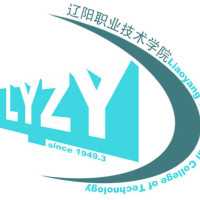The school has a profound heritage. Liaoyang Vocational and Technical College is located in Liaoyang City, Liaoning Province, a famous historical and cultural city in the north. It is a state-owned full-time general higher education institution approved by the Liaoning Provincial Government and registered with the Ministry of Education. It is the project establishment unit for the construction of a model higher vocational college in Liaoning Province. . Since its establishment in 1949, the college has adhered to the spirit of the school motto of "Being Moral, Inspiring, Studying and Practicing", advancing with the times, and adhering to the school's policy of "establishing a school with quality, developing a school with talents, building a strong school with specialties, and becoming a famous school with characteristics". Focusing on the campus cultural concept of "making excellence a habit" and the "Lei Feng-style professional" training project, we are committed to building a provincial-level demonstration higher vocational college with characteristics, innovation and social service, and cultivating noble morals and personality for the society. Technical application-oriented talents who are sound, capable and comprehensive. Strong teaching staff The college covers an area of 350,000 square meters, with fixed assets of 230 million yuan. There are nearly 7,000 full-time students and more than 2,000 adult education students. Students can obtain more than 40 national vocational qualification certificates during their studies. The college has 7 student apartments, 6 teaching buildings, 1 teaching training building, 1 administrative building, 1 comprehensive training base, 1 car driver training school, 1 comprehensive gymnasium, and a standard 400-meter plastic field 1 block, 1 block each for basketball court, volleyball court, and tennis court. There are currently 603 faculty members and 332 full-time teachers, including 118 associate professors, 38 professors, 202 master's and doctoral candidates, and 232 "double-qualified" teachers. The college has 11 departments and 36 majors, covering six major professional groups including equipment manufacturing, biochemical engineering, information engineering, modern services, art design and teacher education. Broad professional prospects. In recent years, the college has focused on students' professional practical skills and increased investment in practical training facilities. The level of students' professional skills has been significantly improved. Among them, automobile inspection and maintenance technology and preschool education are national-level professional ability improvement and construction majors; environmental engineering technology and automobile inspection and maintenance technology are provincial-level brand majors; computer network technology, machinery manufacturing and automation are provincial-level demonstration majors; food biotechnology , the fine chemical technology training base is a national-level training base; the machinery manufacturing and automation, CNC technology, automobile inspection and maintenance, and clothing processing bases are provincial-level training bases; the automobile inspection and maintenance technology base is a provincial-level public training base ; The environmental and chemical engineering professional base is a provincial teacher training base. The college has a multi-faceted education model and adopts a talent training model of "two-way interaction, school-enterprise cooperation, integration of work and study, and strong ethics and strong skills", and has established off-campus internship and training bases with more than 100 companies across the country. Guided by social needs, the "2211" teaching model is adopted for teaching, which strengthens the skills training necessary for students' employment, so that students can be qualified for jobs upon graduation. We have created six school-enterprise cooperative school-running models based on professionalism, innovated the function of internship training base, and strived to achieve the integration of school factoryization, classroom workshopization, and teaching. The diversified and multi-level open schooling model has been expanded to form a new schooling pattern that simultaneously promotes undergraduate, junior college, higher vocational education, training, correspondence courses, self-study examinations, international cooperation in running schools, and vocational skills appraisal.
-

Tsinghua University
-

Peking University
-

Fudan University
-

Wuhan University
-

Zhejiang University
-

Nanjing University
-

Sun Yat-sen University
-

Tongji University
-

Renmin University of China
-

Jahrom University of Medical Sciences
-

Mesoamerican University
-

Istmo University
-

Mariano Galvez University of Guatemala
-

Regional University of Guatemala
-

Galileo University
-

Francisco Marroquín University
-

Rafael Landívar University
-

University of the Valley of Guatemala
-

University of San Carlos of Guatemala
-

Technological Institute of Tlaxcala Plateau
-

Golfo University
-

Technological University of South Sonora
-

Technological University of Huejotzingo
-

Tizimín Institute of Technology
-

Chilpancingo Institute of Technology

